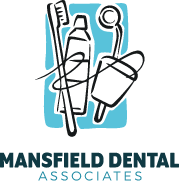Snoring can be disruptive to your family and loved ones’ sleep. It can also be a sign of a serious sleep disorder known as obstructive sleep apnea (OSA). So, how can you decipher between simple snoring and OSA? Knowing the difference can help you get the right treatment to solve the problem. Obstructive sleep apnea can increase your risks of serious health complications that can include high blood pressure or heart disease. Your dentist can help you to treat OSA, which can lower your risk of developing these serious complications. Treatment can also help you and your loved ones to get restful nights of sleep.
Simple Snoring or OSA?
Simple snoring happens when the soft tissue in your throat partially blocks your air passage causing a vibration that creates a sound. Snoring can be caused by things like being overweight, sinus conditions, allergies, a common cold or flu, and having excess soft tissue in your mouth or throat. OSA is a condition where your airways are blocked by the soft tissues so significantly that you nearly suffocate. Your body will wake you up so that you can gasp to get oxygen. Your body waking up is usually not enough to consciously wake your brain, but it can happen enough times during your sleep to be disruptive to your sleep cycle.
Risks Increased by OSA
Sleep disruption from OSA can be enough to prevent you from reaching a full sleep cycle with REM (rapid eye movement), the most restorative part of sleep. This lack of restorative sleep can leave you drowsy and prone to mood swings. Sleep deprivation can also create changes in your hormones, which can lead to depression or obesity. When your body begins to adjust to the deprivation of oxygen in your blood caused by OSA, it may increase your blood pressure. High blood pressure increases your risks of stroke, heart disease, and more health problems.
Is your snoring a sign of sleep apnea?
Your dentist can help treat OSA. Schedule a consultation at Mansfield Dental Associates by calling 817-473-6227. Located in Mansfield, TX, we also welcome patients and families from all surrounding communities including South Arlington, Kennedale, Southeast Ft. Worth, Alvarado, Midlothian, and more.





Recent Comments